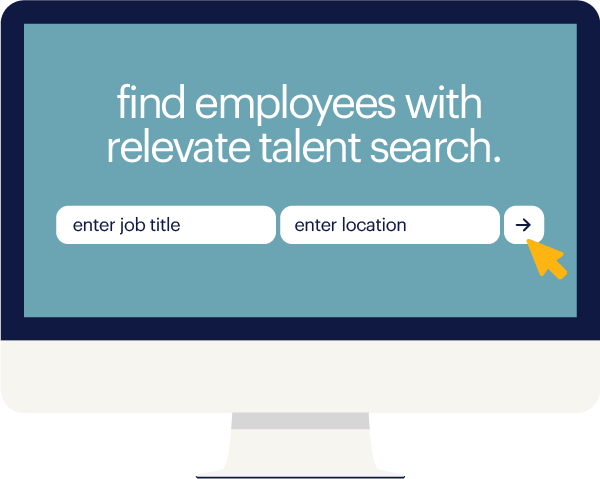If you're looking to hire a receptionist today, you're far from alone. Labor-market analysis provider Burning Glass deems this position as high in demand, with a staggering 141,023 job postings over the past 12 months, and an average of 26 days to fill an open role. Given that receptionists are a crucial part of any office operation — oftentimes they offer the first impression of your company to clients and other business leaders visiting your office — it's important for these vacancies to be filled swiftly and efficiently.
But where do you begin the process? Follow this checklist to ensure a super (and speedy) receptionist hire:
1. ensure your hiring process is efficientReady to learn more about how to approach each step? Let's get started.
1. speed up your hiring process
Receptionists are vital contributors to a business's day-to-day operations. And while they handle a wide range of duties that strengthen the overall organization of a workplace (scheduling meetings, sorting mail, answering calls), their most crucial role is acting as the gatekeeper for your company. Even in our fast-paced world of increased automation and digitization, there's simply no replacing this human element on the front lines of your business.
So while you don't want to rush recruitment for such an important role, you do want to be strategic and efficient. Use this diagram to help determine where you can remove some bottlenecks that may be holding up your hiring process.
2. develop a competitive compensation package
A competitive salary is the foundation of a strong job offer — and in today's job market, where salary transparency is growing, candidates know their value and what it costs to attract them. So if you follow suit by monitoring salary trends and knowing what makes for a strong compensation package, you'll be in the best position possible when determining the amount to pay new hires.
Taking a look at Randstad's salary guide is a great place to start, as it offers insights into hiring and salary trends within the office and administration space. But since salaries are sure to vary by region, it's a good idea to check out our salary calculator for up-to-date pay rate data for your specific area.
today's employers need to keep a close eye on salary trends and know what makes for a competitive salary.
3. identify the top skills for receptionists
In order to write an efficient and compelling job description, you need to know what to look for in the best receptionists. What skills and prowess are needed to get the job done effectively? The answer to that question will vary greatly from company to company, so start off by making a list of the receptionist's primary duties in order to define what skills the ideal candidate should possess.
Then break down that list into two different categories: "hard" skills — those that directly relate to the receptionist's duties and any technical proficiencies, like expert knowledge of Outlook or G Suite — and "soft" skills, which generally speak to the social skills a candidate will need to succeed in the role.
To get an idea of where to begin, here are the skills most requested of receptionists, based on more than 141,000 job postings:
hard skills
administrative support
customer service
scheduling
data entry
mail sorting
soft skills
communication
organization
detail-oriented
multitasking
teamwork/collaboration
4. write an eye-catching job description
Think of your job description as a marketing tool for the role, one that excites a candidate to apply and be a part of your company. Here are three tips to remember when writing your next description.
don't write like a robot
Your job description shouldn't read like a list of cumbersome duties. Trust us — not a single candidate will be excited to read dry, matter-of-fact sentences that rigidly outline basic expectations and responsibilities. Instead, use warm, personable language and appeal to them by highlighting the human aspects of the role that they would enjoy.
Focus on how the people skills mentioned above — a strong sense of communication, organization and attention to detail — will be put to use, while also addressing questions regarding your workplace culture and how the receptionist supports the company. Candidates for a receptionist position want to know: What's the work atmosphere like? How large is the company and how many people will I need to support? Are there opportunities for professional development and advancement, say, to an executive assistant role?
entice candidates to apply by using warm, friendly language in your job descriptions — not a dry list of duties and requirements.
show how the job is meaningful
Job seekers today want to align with a role (and a company) that has a sense of purpose. Since receptionists are the face of your company, really stress how important these human interactions are to the business's success and how much you value this role's ambassador status.
Candidates will also want to know the possibilities for individual growth. Working as a receptionist puts the employee at the center of your business, where they learn about and interact with all the different departments and functional areas. And over time, they'll learn new skills and digital platforms that will prepare them for advancement or another career path within your company. Call out opportunities for internal advancement so candidates can envision their career with you over the long term, and not just in the role they initially sign on for.
make it easy to skim
A strong job description uses concise, strategic language to paint an accurate and inviting picture of what it's like to work for your company. And that concision will be key, since most job seekers will skim a listing before taking a deeper dive into the details. Bottom line: Making your description easy to skim is the best way to ensure prospects get all the information they need in as short a time as possible
This doesn't mean you should skip out on everything but the quick facts, however. It just means that you package all of the information in an easily digestible way. And how do you do that? By formatting the description to include:
- bullet points
- short paragraphs
- front-loaded sentences that use strong action verbs
If you'd like even more guidance here, read additional writing tips and insights in our guide to writing highly effective job descriptions.
5. brush up on the latest industry trends
Knowing how trends in the office and administration space will impact the quality and quantity of your hires can only strengthen your recruitment process. After all, you're not just hiring for a receptionist right now, you're putting together a strategy to tackle future hiring as well.
Here are a few of the biggest trends impacting the industry today:
- Receptionists are one of the most in-demand positions in office and administration, with the number of available jobs expected to grow four percent by 2029.
- The booming healthcare industry is driving much of the demand, as companies in that arena continue to expand their personnel in order to support growth.
- The top five states leading the demand for receptionists are California, Texas, Florida, New York and Arizona, meaning that employers in these markets need to be prepared for even more competition when sourcing talent.
demand for receptionists is only going to grow — four percent by 2029, to be exact.
6. choose your channels to find candidates
There are many different avenues in which an employer can go about finding candidates for open positions, but not all are equal in merit. This is especially true when hiring receptionists, since factors like the size of your business, the number of receptionists needed and recruitment budgets can all determine which paths you pursue. Plus, given the importance of this role on all fronts, you need to find someone you can depend on — not just a seat-filler.
If job boards are letting you down and employee referrals have yet to shine a light on the superstar you need, consider whether working with a professional staffing firm is right for you. Partnering with a staffing agency means getting access to a pool of prescreened, vetted candidates — and with their deep knowledge of hiring in the office and administration space, their insights and support can help strengthen your business long after you've hired your next great receptionist.
Sounds good, right? Start a conversation today with Randstad's office and administrative experts to discuss your receptionist needs and more. Or, if you'd rather browse the high-quality candidates we're excited to have in our talent pool, head on over to our Find Employees portal.








